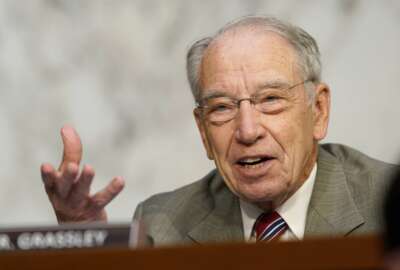Hubbard Radio Washington DC, LLC. All rights reserved. This website is not intended for users located within the European Economic Area.
One year later: Experts weigh in on GPRA modernization
Panel discussion guests include Lisa Danzig, director of the Office of Strategic Planning and Management at Housing and Urban Development; Seth Harris, deputy s...
The Government Performance and Results Modernization Act was signed into law more than a year ago. It created a new government-wide planning and reporting framework, quarterly priority progress reviews, and an annual process to eliminate duplicative and outdated practices. The Federal Drive explored what agencies are doing differently under the GPRA Modernization Act in a panel discussion with:
- Lisa Danzig, director of the Office of Strategic Planning and Management at Housing and Urban Development
- Seth Harris, deputy secretary of Labor Department
- Robert Shea, principal at Grant Thornton and former associate director for Administration and Government Performance at the Office of Management and Budget
Setting metrics
Private-sector companies have clear performance goals: Profits. The goals can be more difficult to establish and measure at federal agencies.
“It’s very important to measure everything we do. Otherwise, you’re not getting a sense of how the organization is performing,” Harris said.
Labor reviews 238 metrics every quarter, Harris said. He added that he goes through these metrics “line-by-line” and makes notes on information he finds “interesting, praise-worthy [or] troubling.”
“Every meeting, we ask, ‘Is there more we need to do? Are there measures that need to be tweaked?'” Harris said.
Where historical data was available, Labor benchmarked its metrics against the previous five years. In half of those cases, the agency beat out prior years, Harris said.
The agency also did a “budget-adjustment performance” to ensure better performance was not due only to getting more funds.
Danzig said HUD is holding HUDStat sessions — modeled after the TechStat and AcqState sessions by OMB — to oversee the agency’s performance. HUD works collaboratively on some goals, such as with the Department of Veterans Affairs on issues related to veteran homelessness.
HUD has seven agency priority goals with a couple key measures per goal and a set of supporting measures, Danzig said.
Referring to Labor and HUD, Shea said, “These are organizations with not-small ambitions doing lots of stuff with lots of partners, and so, in order to get a handle on that, you’re going to need a decent number of measures: Not too many, not too few. You need just the right amount.”
‘Safe place’ to discuss challenges
Part of the challenge in doing regular reviews is creating what Harris called a “safe place” to discuss challenges to agency performance.
“At the beginning, folks really chafed at it,” Harris said. “Nobody likes to be held accountable and nobody likes to have to rat out their colleagues.”
But as the reviews continued, employees realized that the meetings were an opportunity to set priorities, strategies and resource allocations.
There still is not enthusiasm for such reviews, but “there’s a lot less conflict and angst around it,” Harris said. “And the discussions are incredibly rich about really what we are as an organization, who we’re serving and what we’re trying to accomplish.”
Shea said agencies “really need to open the kimono on what’s failing and what we’re doing to do different to improve performance. The most important variable there in Washington is money. Where are we going to divert investment to greater performance?”
Chief operating officer
The GPRA Modernization Act directed agencies to make the deputy head of the agency or an equivalent official the chief operating officer. This position would be responsible for improving agency performance.
Shea said this individual must have “dynamism and sufficient nerdiness” to carry out the tasks.
The challenge is the individuals named COOs are often wearing multiple hats.
“One of the rules of Washington is, if you want something done, give it to a busy person,” Shea said. “So it’ll be hard to make this the exclusive responsibility of an individual.”
Harris added that it’s not enough to have one dedicated staff person for performance. “It has to come from the very top of the organization,” Harris said.
RELATED STORIES
GAO: How to enhance agency performance under GPRA
OMB attacking duplication with 11-agency pilot
OMB finally launches Performance.gov portal
Copyright © 2024 Federal News Network. All rights reserved. This website is not intended for users located within the European Economic Area.
Related Topics
Fed Photo of the Day

Pilot whales stranded on a beach at Toby's Inlet in Western Australia
Daily photos of things happening in and around the federal government.



